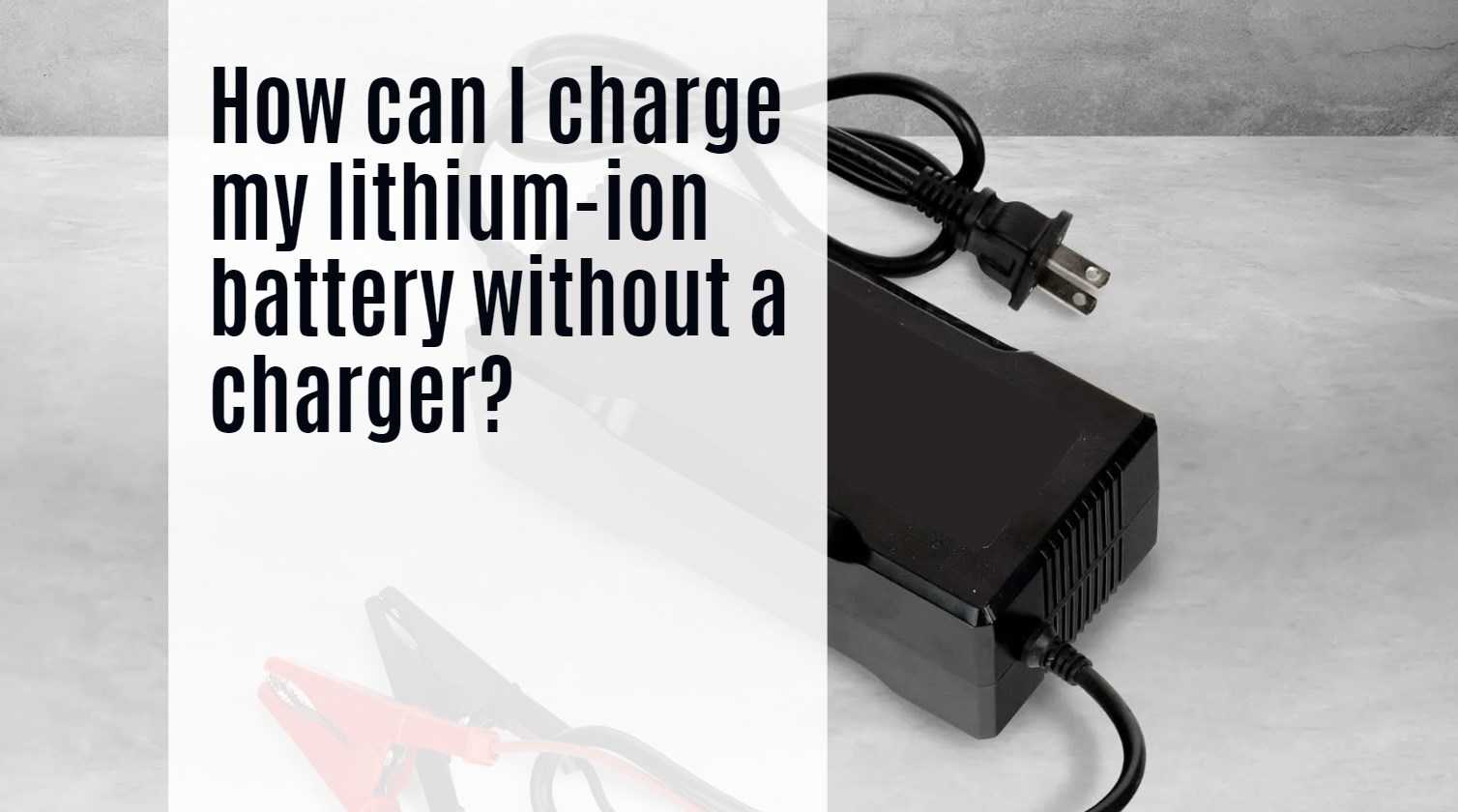Charging a lithium-ion battery without a charger can be accomplished using several alternative methods, such as utilizing a USB port, power bank, solar charger, or even a car battery. However, it is crucial to ensure the voltage and current are appropriate to avoid damaging the battery.
Alternative Methods to Charge Lithium-Ion Batteries
1. USB Charging
Most modern devices come equipped with USB ports that can be used to charge lithium-ion batteries. Here’s how you can do it:
- Connect to a Computer or Laptop: Use a USB cable to connect your device to a computer or laptop. This method provides a safe and regulated charging current.
- Use a USB Wall Adapter: If you have access to a USB wall charger, plug your device into it for charging. Ensure that the output voltage matches the battery’s requirements.
2. Power Banks
Power banks are portable chargers that store electrical energy and can be used to charge devices on the go.
- Choose the Right Capacity: Select a power bank with sufficient capacity to charge your lithium-ion battery.
- Connect Properly: Use the appropriate charging cable to connect your device to the power bank. This method is convenient for outdoor activities or travel.
3. Solar Chargers
Solar chargers harness sunlight to generate electricity, providing an eco-friendly way to charge lithium-ion batteries.
- Set Up in Direct Sunlight: Place the solar charger in direct sunlight for optimal performance.
- Connect Your Battery: Use compatible cables to connect the solar charger to your battery. This method is ideal for camping or hiking where conventional power sources are unavailable.
4. Vehicle Chargers
If you have access to a vehicle, you can use its battery as a power source.
- Use a Car Charger: Many vehicles come with 12V outlets that can be used for charging. Use an appropriate car charger designed for lithium batteries.
- Monitor Charging: Keep an eye on the charging process to prevent overheating.
5. Kinetic Charging
Kinetic chargers convert mechanical energy from movement into electrical energy.
- Wearable Devices: Some wearable technology features kinetic charging capabilities that utilize motion to charge built-in lithium-ion batteries.
Safety Tips When Charging Without a Charger
- Check Voltage Requirements: Always verify that the voltage of your charging source matches the specifications of your lithium-ion battery.
- Monitor Temperature: Lithium-ion batteries are sensitive to heat. If the battery becomes excessively hot during charging, discontinue the process immediately.
- Avoid Overcharging: Use methods that allow you to monitor the charge level and prevent overcharging, which can lead to battery damage or safety hazards.
- Inspect Connections: Ensure all connections are secure and insulated to avoid short circuits.
Latest News on Alternative Charging Methods
- Innovations in Solar Technology: Recent advancements in solar panel efficiency have made solar chargers more effective for powering devices on-the-go.
- Growth of Power Bank Market: The demand for power banks continues to rise as consumers seek convenient solutions for charging devices away from traditional power sources.
- Sustainability Initiatives: Companies are increasingly focusing on eco-friendly practices in battery production and recycling, promoting sustainable energy solutions.
Redway Expert Comment
As experts in lithium LiFePO4 battery technology, we emphasize that while alternative methods for charging lithium-ion batteries exist, safety should always be a priority. Using appropriate equipment and ensuring compatibility with your device will help maintain battery health and performance.”
Conclusion
In conclusion, there are several effective methods for charging lithium-ion batteries without a standard charger, including USB ports, power banks, solar chargers, and vehicle chargers. By following safety precautions and ensuring compatibility with your battery specifications, you can successfully keep your devices powered when conventional charging methods are unavailable.




